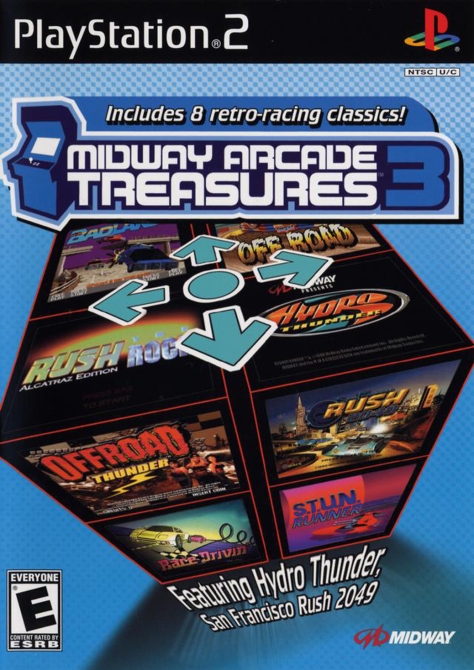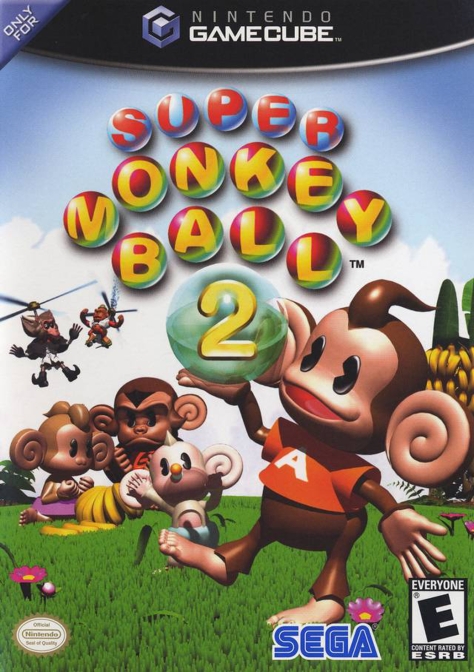
When you have a video game collection like mine, it can be hard to play all of the games. This is especially true when additions are made on an almost weekly basis. Still, I appreciate nearly every game I’ve accumulated for this reason or that. In the hopes of improving my writing through continuous effort and promoting ongoing learning of these games, I’m going to compose brief, descriptive articles.
Before this came out, I thought it looked very interesting. I wasn’t super into Sonic at this point, but I had been previously, notably after the launch of Sonic Adventure 2: Battle. I wound up forgoing this game, but a friend purchased it and we played a fair amount of it. I remember the controls being super sensitive, although imprecise. This didn’t make for an enjoyable experience, especially with a shrunken screen during multiplayer. More realistically, I just wasn’t as good as he was because he had the opportunity to play it more. My poor performance colored my impressions of the game, although I’d like to return to it and examine the single player component. I still think the game has cool look to it; in my mind, it’s very evocative of the time period it was released.
Sonic Riders was developed by Sonic Team, with assistance from NOW Production. It was released for the PlayStation 2, Xbox, and GameCube in North America on February 21, 2006 and published by Sega. A PC version was released later that year: November 17, 2006.
Like this:
Like Loading...


![Evolution Worlds [GameCube] – Review](https://mybrainongames.files.wordpress.com/2019/01/evolution-worlds-gamecube-north-american-box-art.jpg?w=672&h=372&crop=1)

![Cubivore: Survival of the Fittest [GameCube] – Review](https://mybrainongames.files.wordpress.com/2018/01/cubivore-gamecube-north-american-cover.jpg?w=672&h=372&crop=1)

![Random Game #41 – P.N. 03 [GameCube]](https://mybrainongames.files.wordpress.com/2015/02/p-n-03.jpg?w=672&h=372&crop=1)

![Random Game #34 – Batman: Rise of Sin Tzu [GameCube]](https://mybrainongames.files.wordpress.com/2015/01/batman-rise-of-sin-tzu.jpg?w=672&h=372&crop=1)

![Random Game #24 – Sonic Riders [GameCube]](https://mybrainongames.files.wordpress.com/2014/12/sonic-riders.jpg?w=672&h=372&crop=1)

![Random Game #17 – Naruto: Clash of Ninja 1 [GameCube]](https://mybrainongames.files.wordpress.com/2014/12/naruto-clash-of-ninja-2.jpg?w=672&h=372&crop=1)

![Random Game #11 – R: Racing Evolution [GameCube]](https://mybrainongames.files.wordpress.com/2014/12/r-racing-evolution.jpg?w=672&h=372&crop=1)
 When you have a video game collection like mine, it can be hard to play all of the games. This is especially true when additions are made on an almost weekly basis. Still, I appreciate nearly every game I’ve accumulated for this reason or that. In the hopes of improving my writing through continuous effort and promoting ongoing learning of these games, I’m going to compose brief, descriptive articles.
When you have a video game collection like mine, it can be hard to play all of the games. This is especially true when additions are made on an almost weekly basis. Still, I appreciate nearly every game I’ve accumulated for this reason or that. In the hopes of improving my writing through continuous effort and promoting ongoing learning of these games, I’m going to compose brief, descriptive articles.![Random Game #8 – Midway Arcade Treasures 3 [PlayStation 2]](https://mybrainongames.files.wordpress.com/2014/12/midway-arcade-treasures-3.jpg?w=672&h=372&crop=1)
 When you have a video game collection like mine, it can be hard to play all of the games. This is especially true when additions are made on an almost weekly basis. Still, I appreciate nearly every game I’ve accumulated for this reason or that. In the hopes of improving my writing through continuous effort and promoting ongoing learning of these games, I’m going to compose brief, descriptive articles.
When you have a video game collection like mine, it can be hard to play all of the games. This is especially true when additions are made on an almost weekly basis. Still, I appreciate nearly every game I’ve accumulated for this reason or that. In the hopes of improving my writing through continuous effort and promoting ongoing learning of these games, I’m going to compose brief, descriptive articles.![Random Game #6 – Super Monkey Ball 2 [GameCube]](https://mybrainongames.files.wordpress.com/2014/12/super-monkey-ball-2.jpg?w=672&h=372&crop=1)
 When you have a video game collection like mine, it can be hard to play all of the games. This is especially true when additions are made on an almost weekly basis. Still, I appreciate nearly every game I’ve accumulated for this reason or that. In the hopes of improving my writing through continuous effort and promoting ongoing learning of these games, I’m going to compose brief, descriptive articles.
When you have a video game collection like mine, it can be hard to play all of the games. This is especially true when additions are made on an almost weekly basis. Still, I appreciate nearly every game I’ve accumulated for this reason or that. In the hopes of improving my writing through continuous effort and promoting ongoing learning of these games, I’m going to compose brief, descriptive articles.